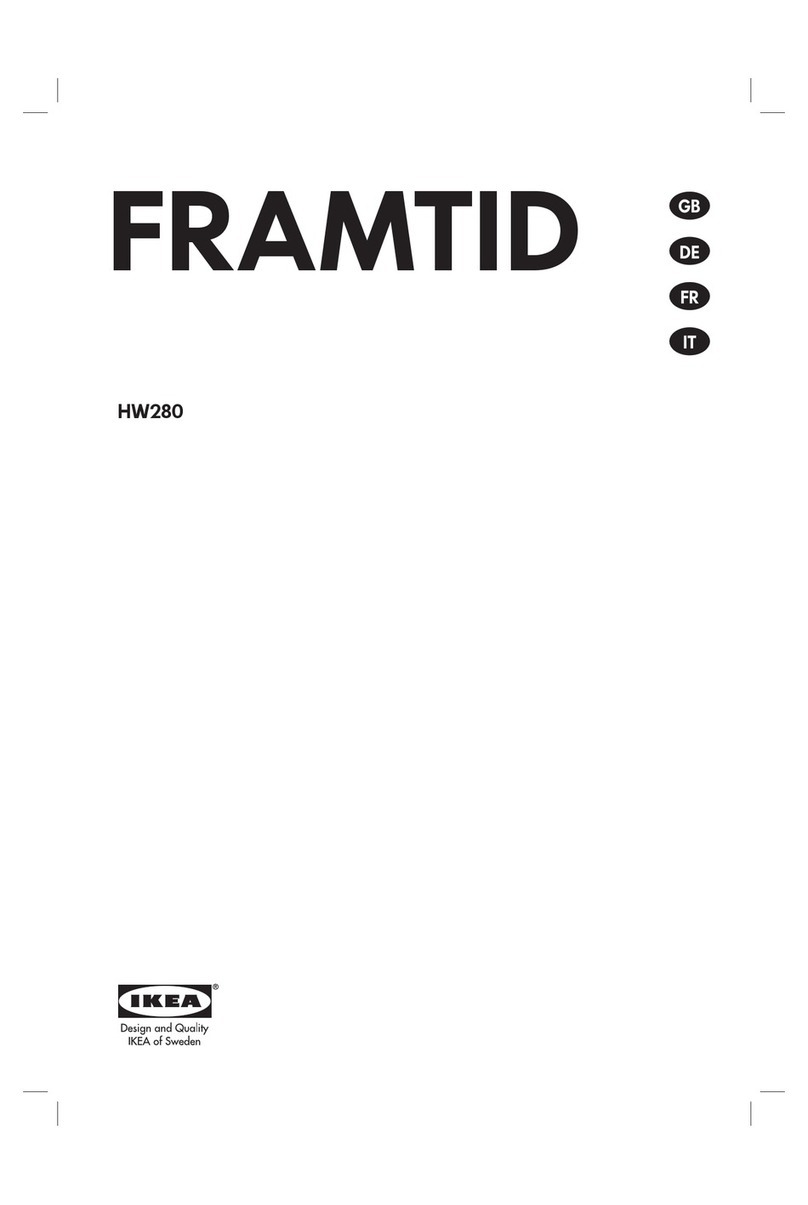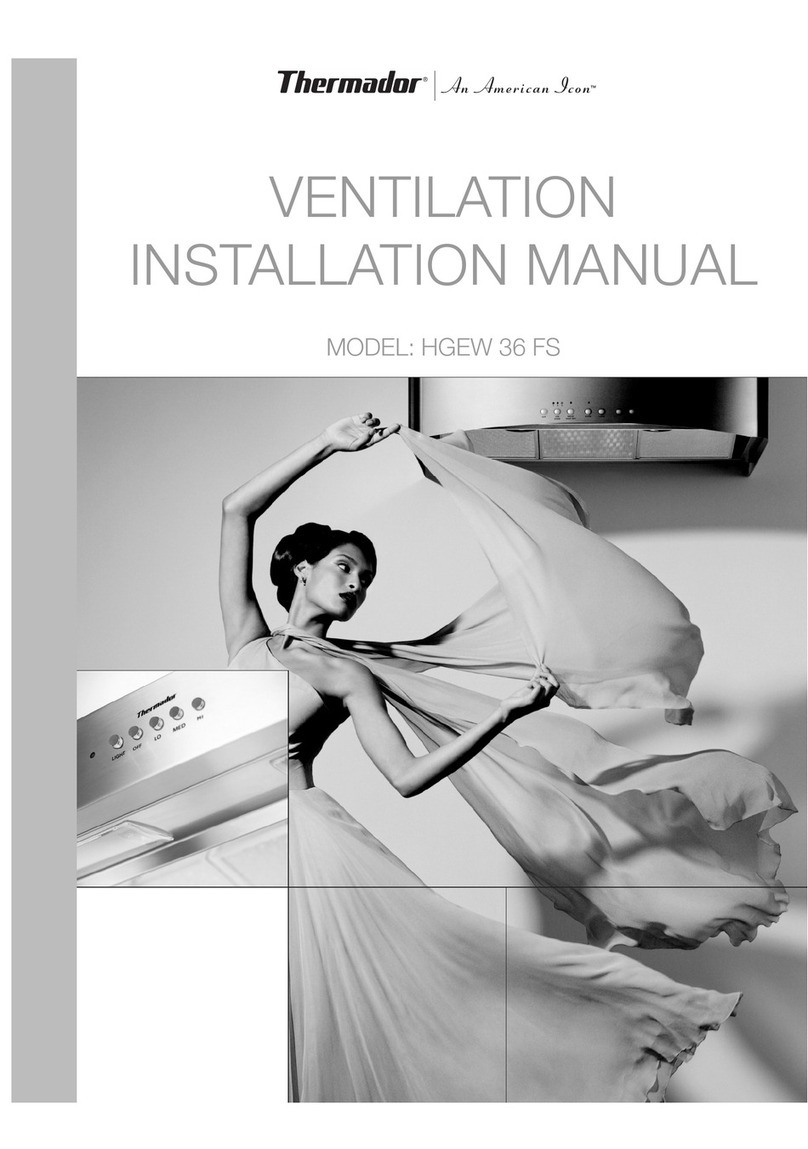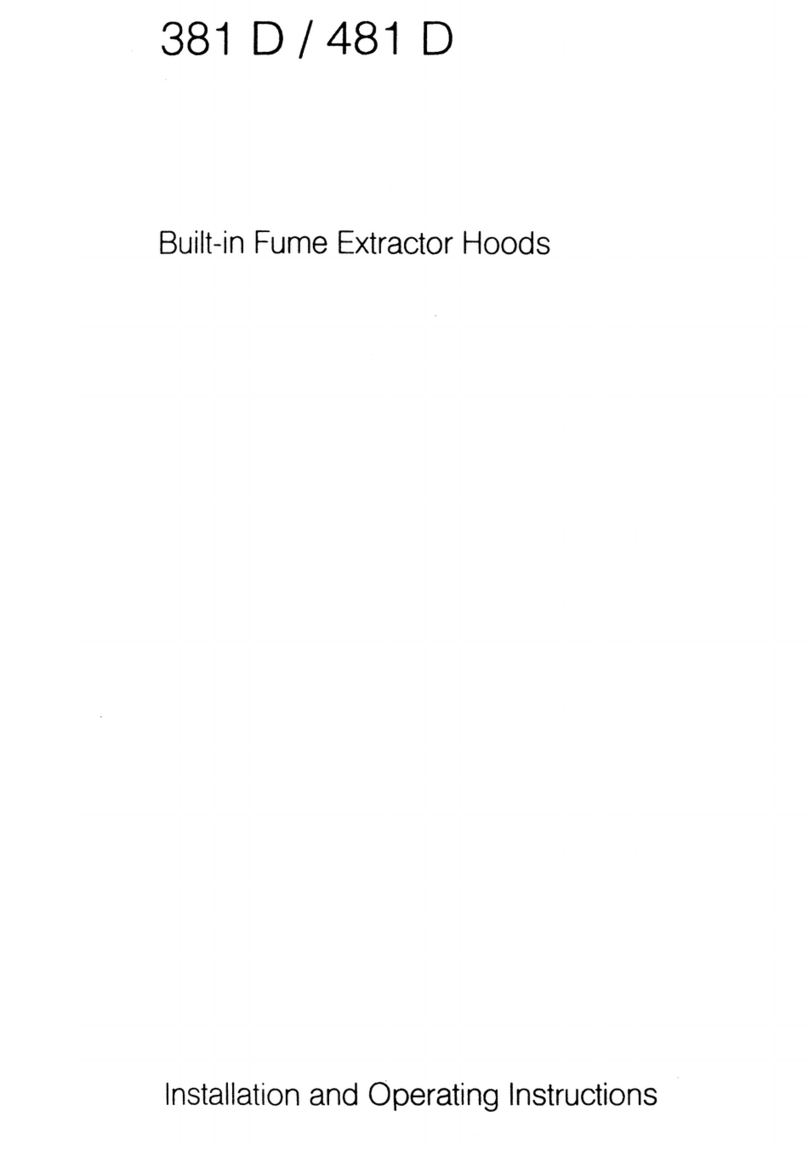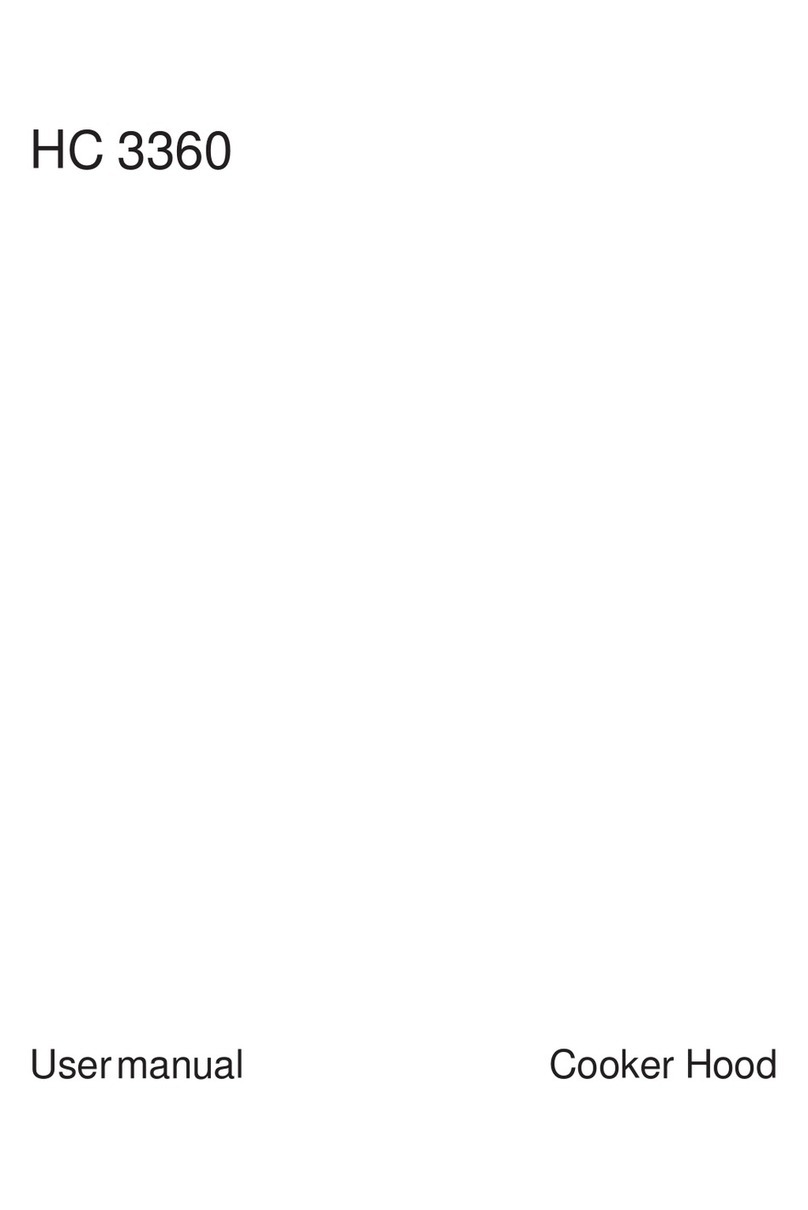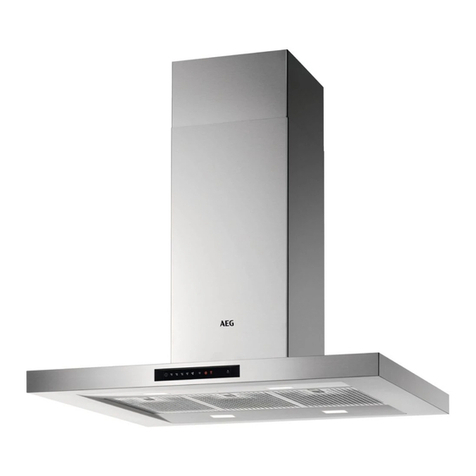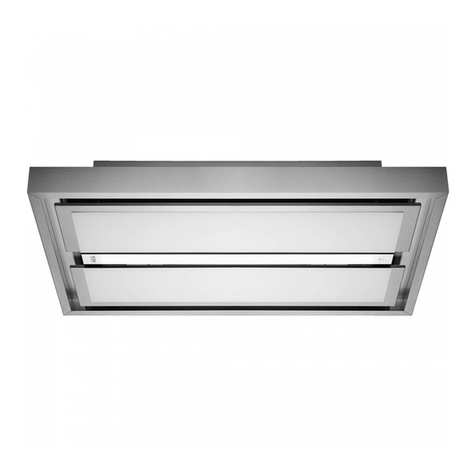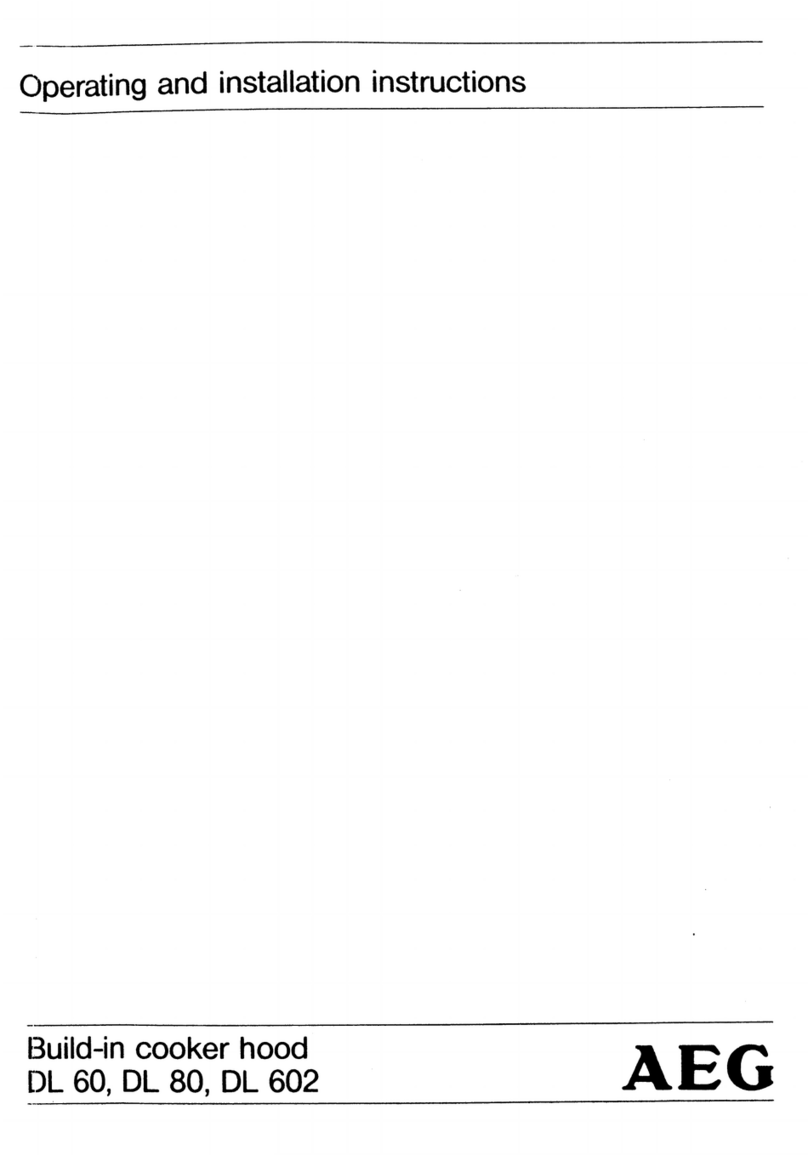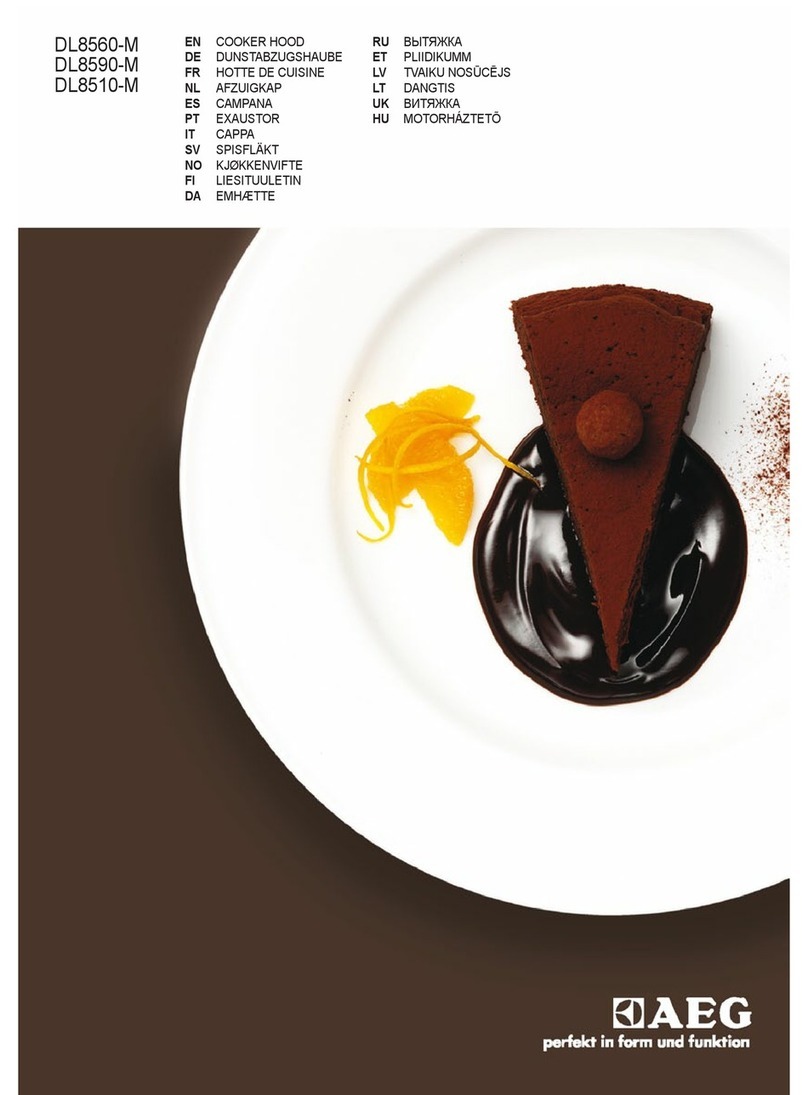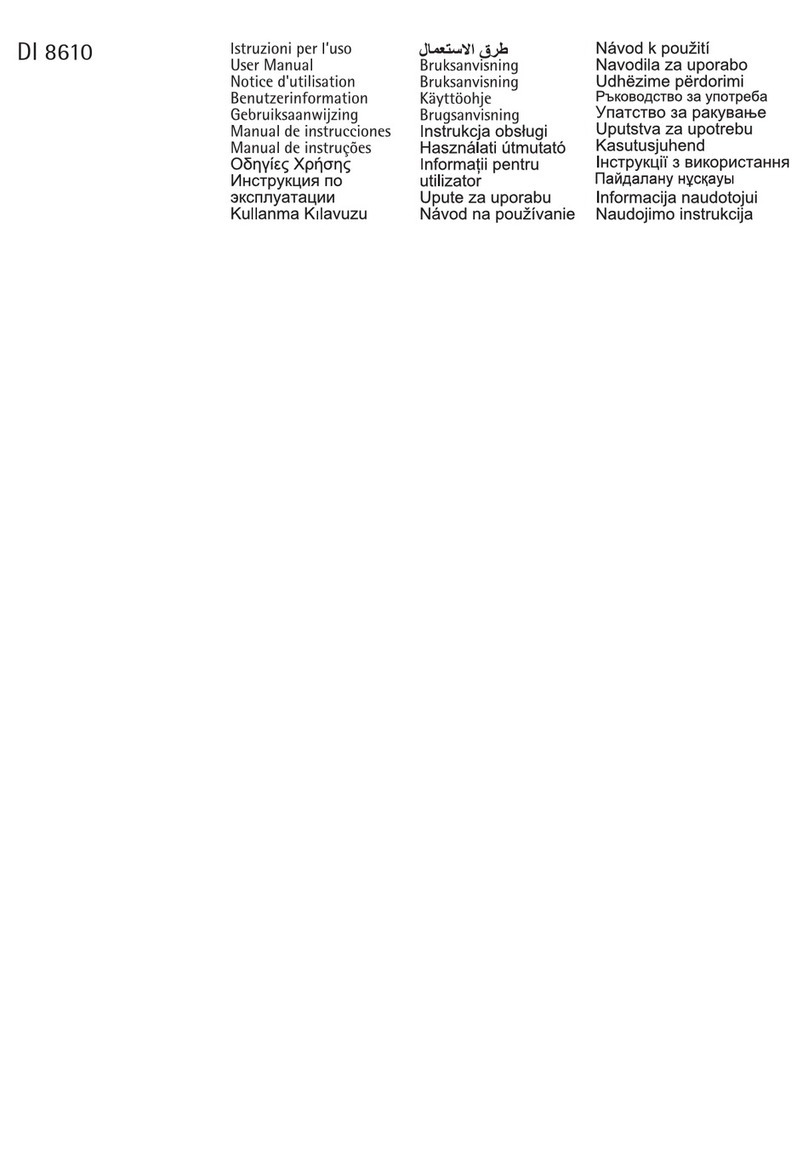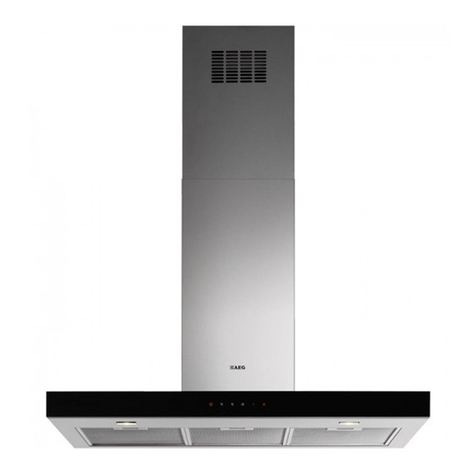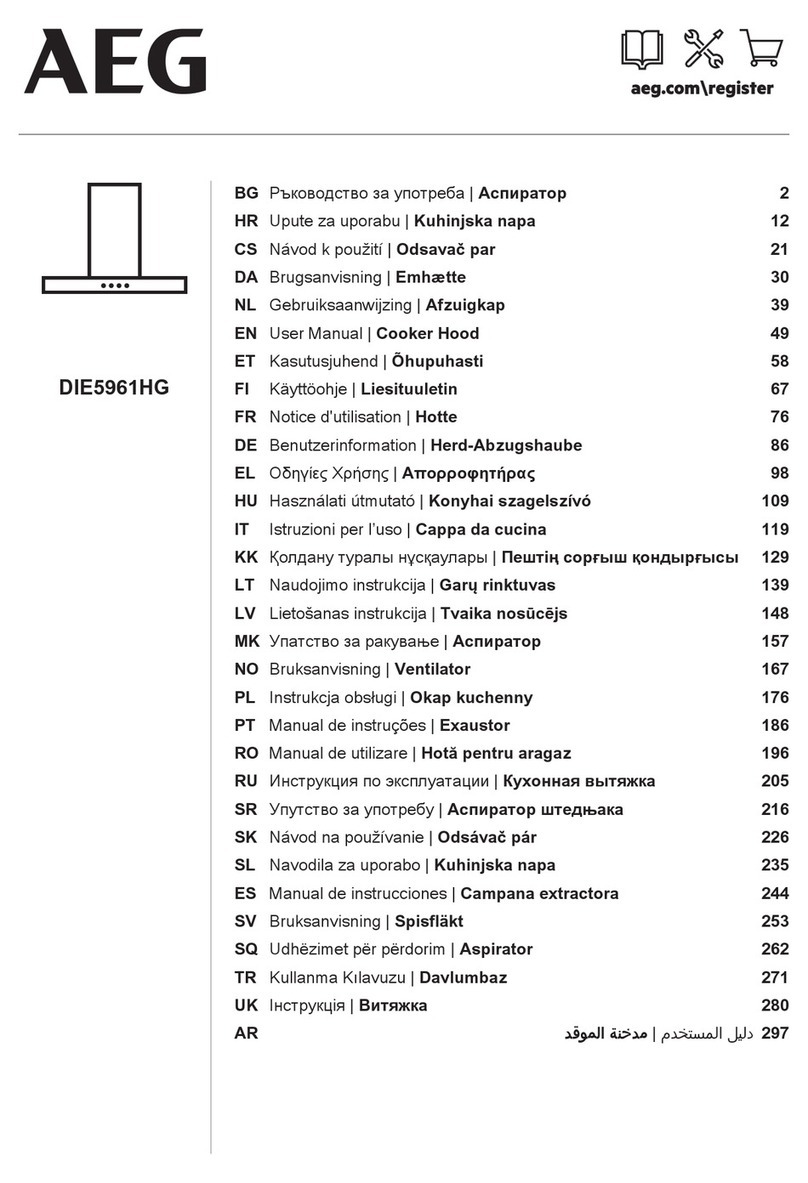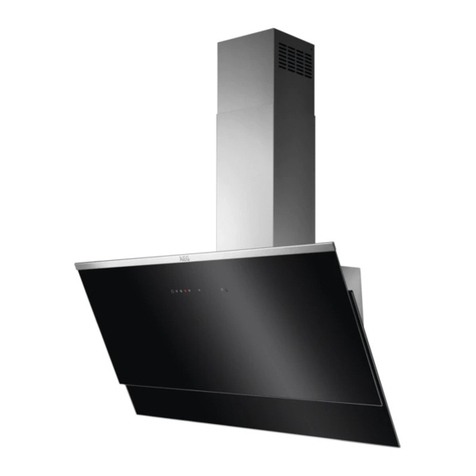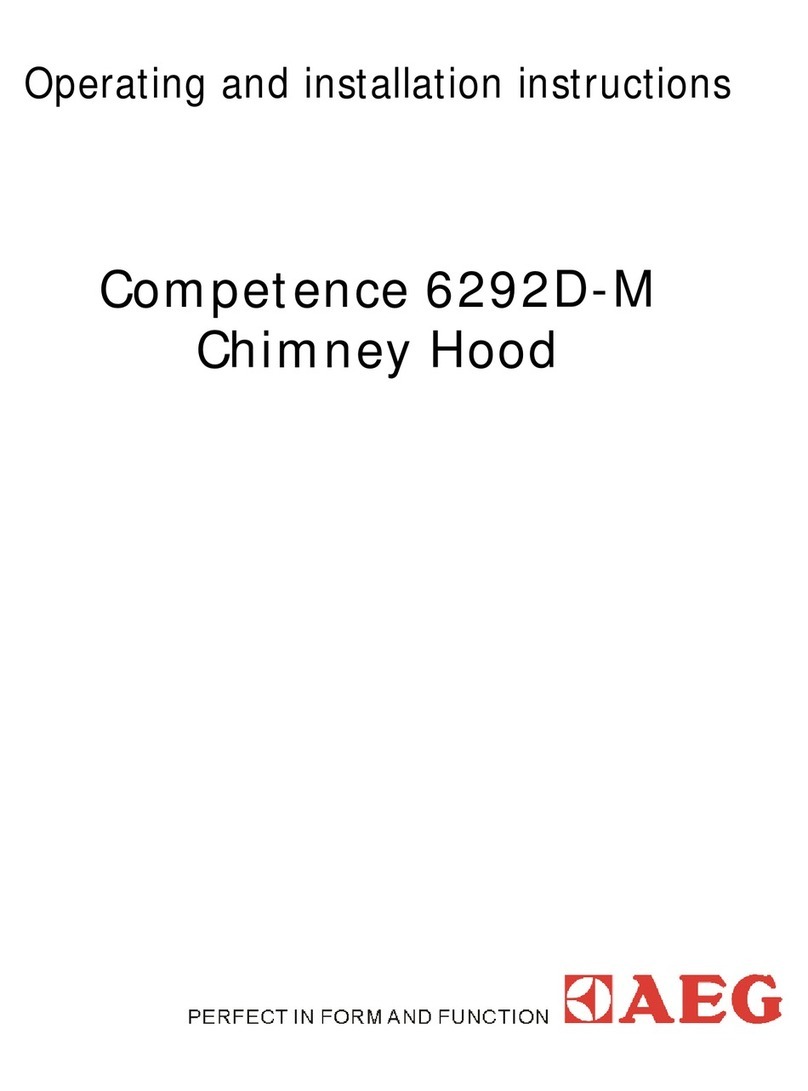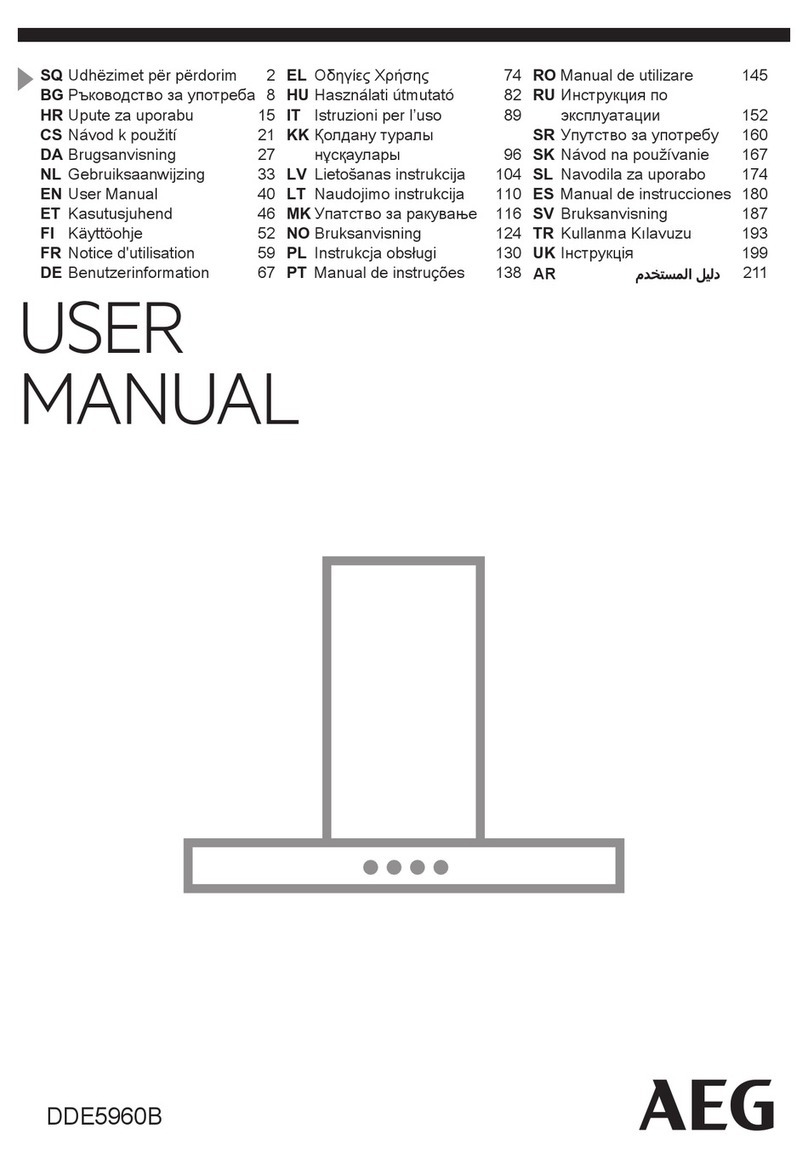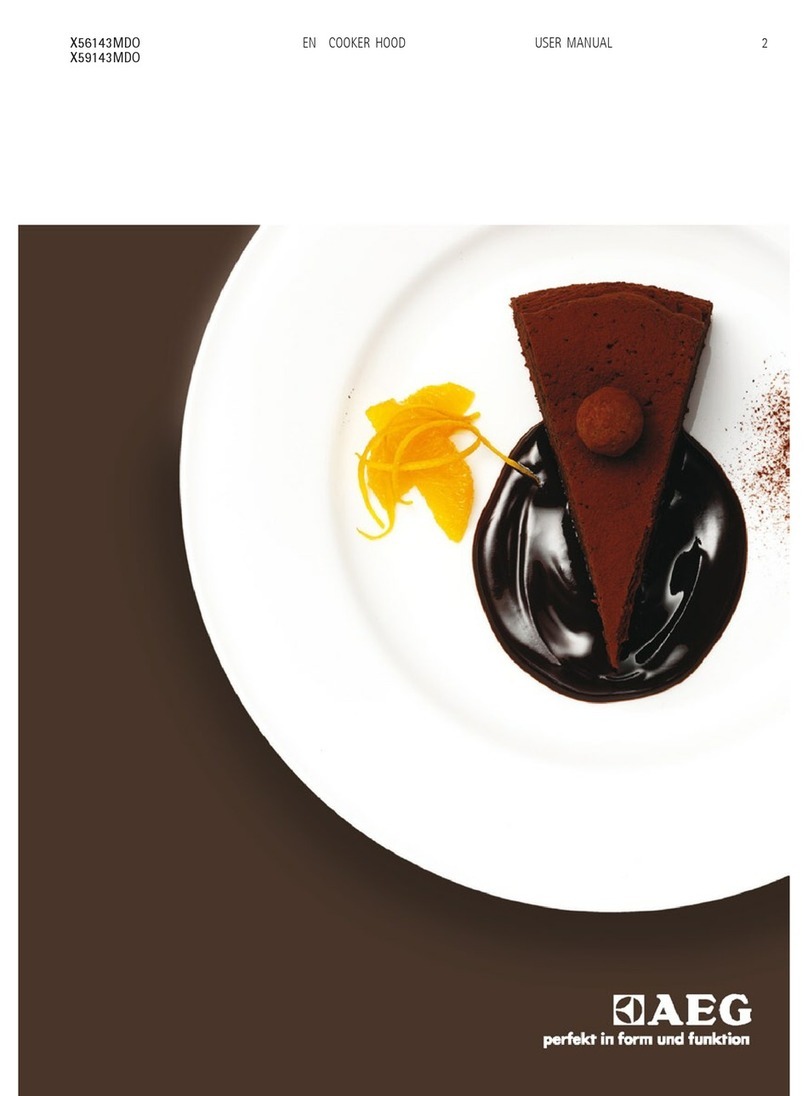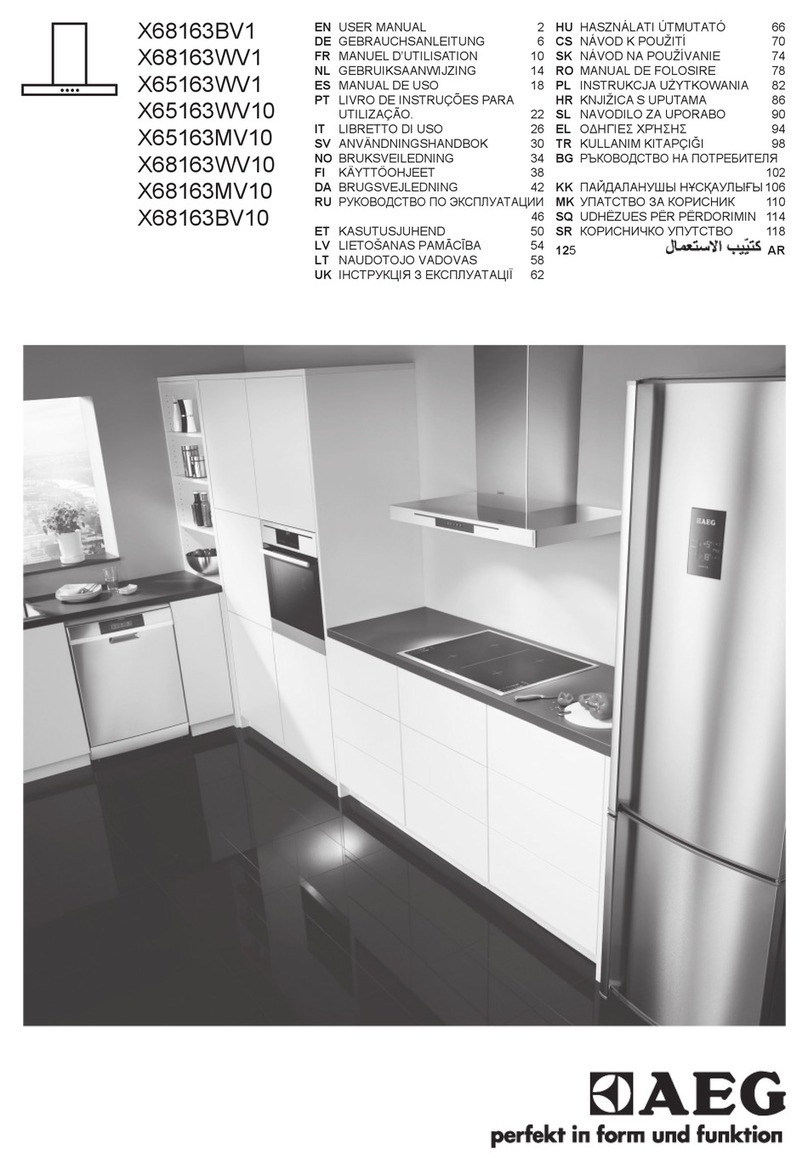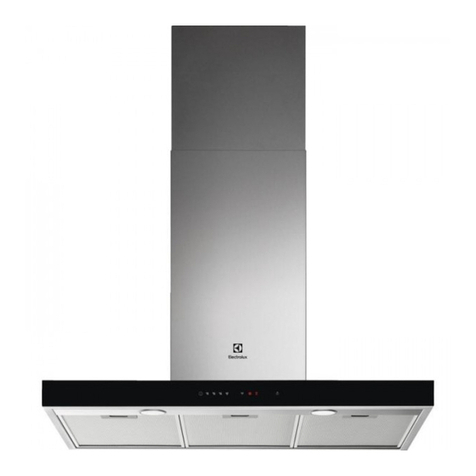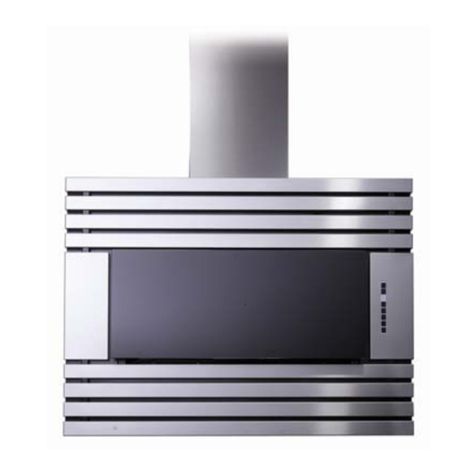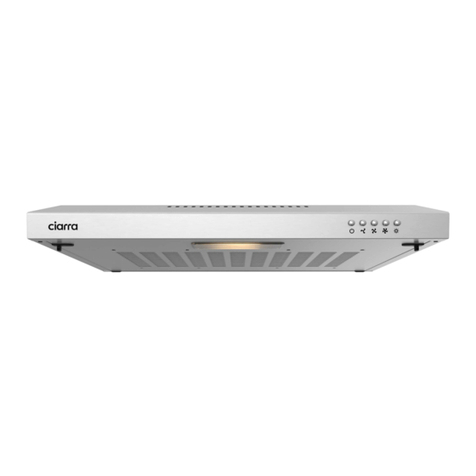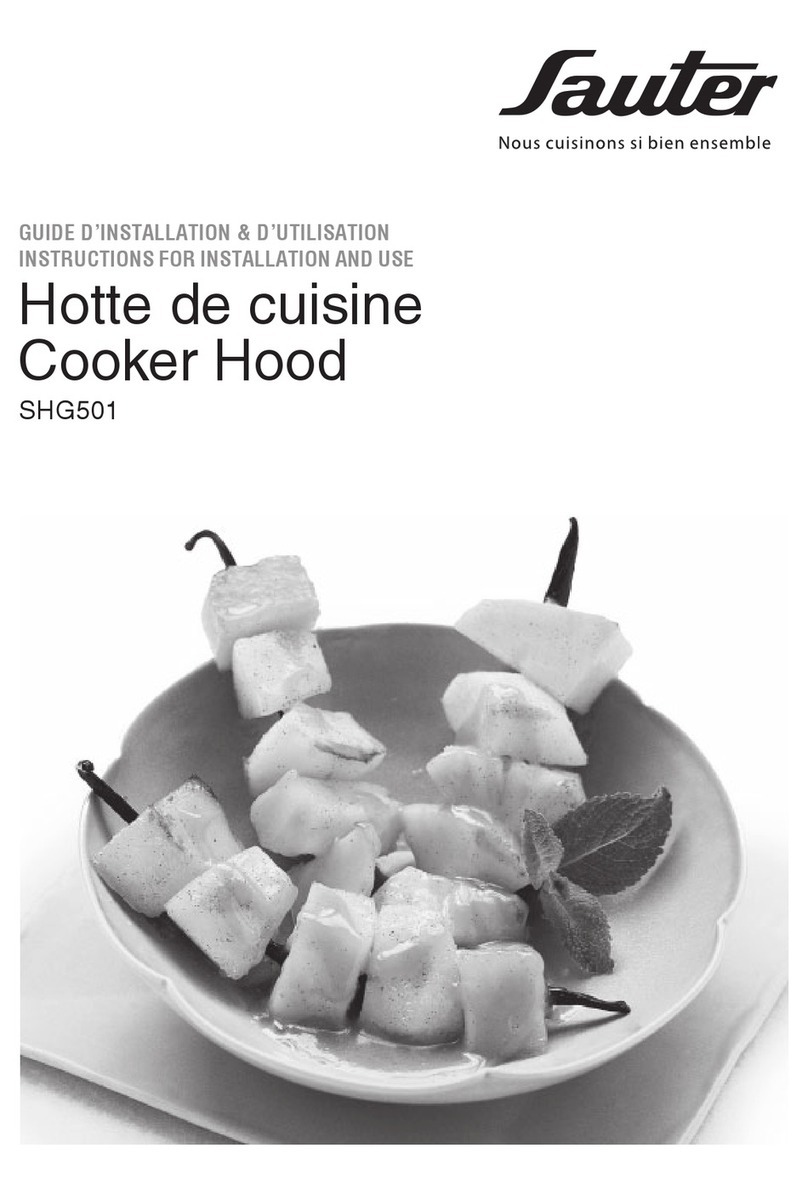7
If the hood is off when the Intensive speed is activated, the hood will
automatically turn off after 5 minutes.
To interrupt the Intensive speed, press button 1 or 5.
The letter P appears on the display and the remaining time (the point a is
flashing), if interrupted an acoustic signal is heard.
7- Self-Timer: times all the speed levels (the point b is flashing), and then the
cooker hood switches off:
The self-timer is set as follows: 1st speed level 20 minutes
2nd speed level 15 minutes
3rd speed level 10 minutes
P (intensive) speed level: 5 minutes
The display shows the remaining operation time, at the end of the time an
acoustic signal is heard. Depressing the push-button again exits the function.
Automatic Sensor calibration:
The automatic calibration is carried on by the hood itself every 30 minutes.
When the hood is installed for the first time or the power is cut off for many hours
or days, please wait 30 minutes before the use or make a manual calibration.
Manual Sensor calibration
Carry out calibration with the hob off, at normal ambient room temperature and in
the absence of an appreciable amount of steam:
-press switch 3 for about 3secs , then press switch 1, the hood emits a sound
signal to indicate calibration taking place.
Sensors test
When functioning in Automatic mode, the system continuously tests the efficiency
of the sensors. In case of a fault the display shows 88. Contact your local
Service Force Centre..
In this situation the hood can, in any case, be used in the manual mode.
Safety procedure
Self-activation of Automatic (SAFETY) mode:
if the sensors reveal an excessive increase in temperature, even if the hood is
in Manual mode, the system self selects the Automatic mode and the hood
selects the necessary speed. The hood can be turned off by pressing push switch
1.
Should the hood or the controls fail to operate: disconnect the power supply for at
least 5 seconds.
After reconnecting the power supply wait 15 seconds and then check that the cooker
hood is now operating correctly.




